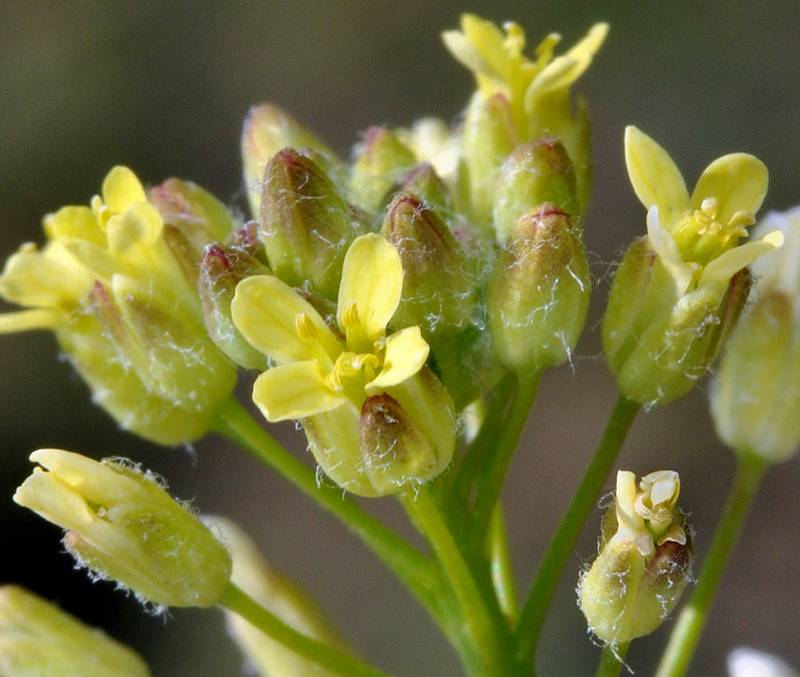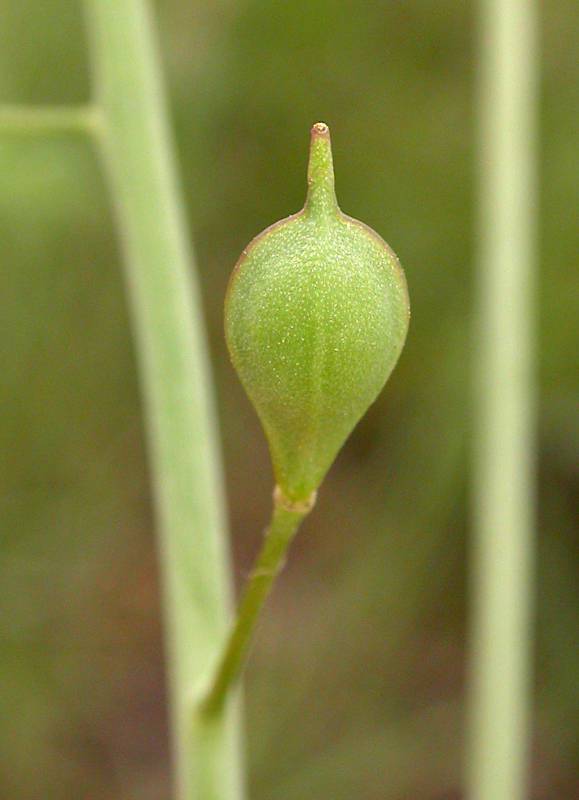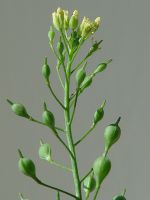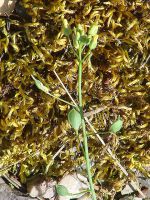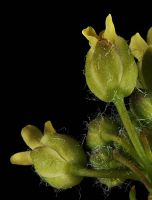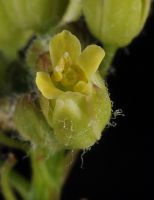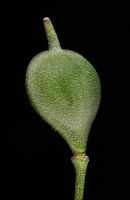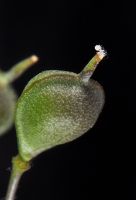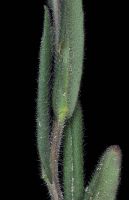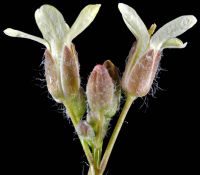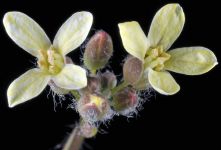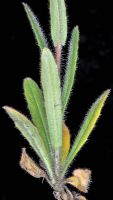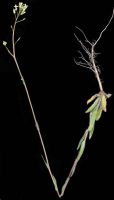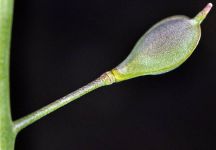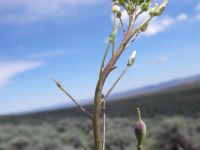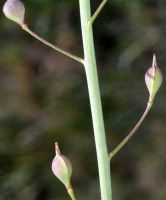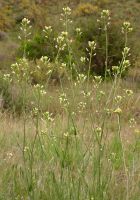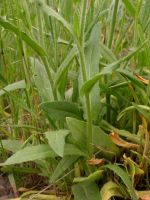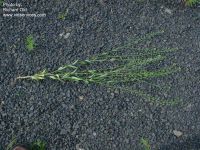Distribution: Occurring east of the Cascades crest and in the Columbia River Gorge in Washington; Yukon Territory to California, east across North America to the Atlantic Coast.
Habitat: Sagebrush, roadsides, ponderosa pine forest openings, and disturbed sites in seasonally moist areas.
Flowers: May-July
Origin: Introduced from Eurasia
Growth Duration: Annual, Biennial
Conservation Status: Not of concern
Pollination: Bees, flies, butterflies
Annual, 3-10 dm. tall, the stem usually simple below and pubescent with simple and forked to stellate, stiff hairs, becoming sparingly branched and often glabrous above.
Leaves alternate, mostly cauline, lanceolate to oblanceolate, entire, 2-8 cm. long, short-petiolate below and sessile and auriculate above, pubescent as the stem.
Inflorescence of elongate, open, simple or compound racemes; pedicels slender, spreading-ascending, 10-15 mm. long; sepals 4, 3 mm. long; petals 4, pale yellow to nearly white, spatulate, 4-5 mm. long; stamens 6; style slender, 2-2.5 mm. long; stigma not lobed.
Silicles obovate in outline, 5-7 mm. long and 3-4 mm. broad, inflated and bi-convex, obtuse at the tip, the valves 1-nerved.
Publication: Syst. Nat. 2: 517. 1821.
PNW Herbaria: Specimen records of Camelina microcarpa in the Consortium of Pacific Northwest Herbaria database.
WA Flora Checklist: Camelina microcarpa checklist entry.
OregonFlora: Camelina microcarpa information.
E-Flora BC: Camelina microcarpa atlas page.
CalPhotos: Camelina microcarpa photos.
USDA Plants: Camelina microcarpa information.

